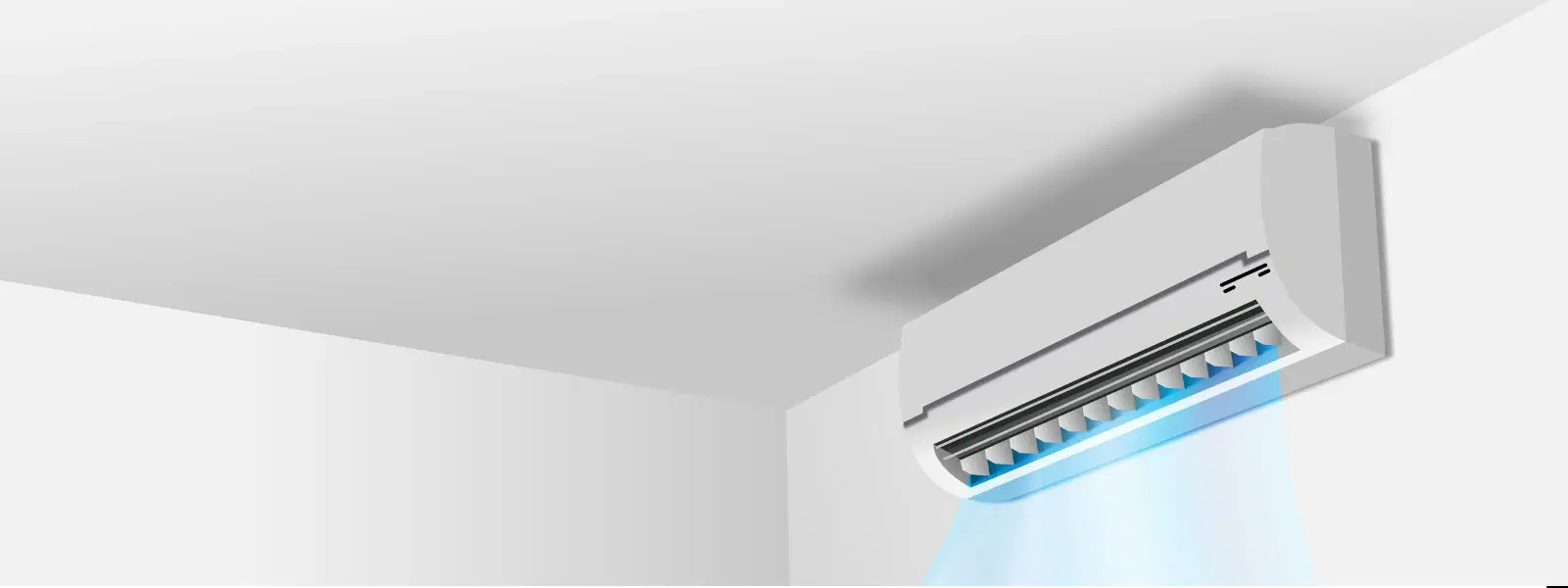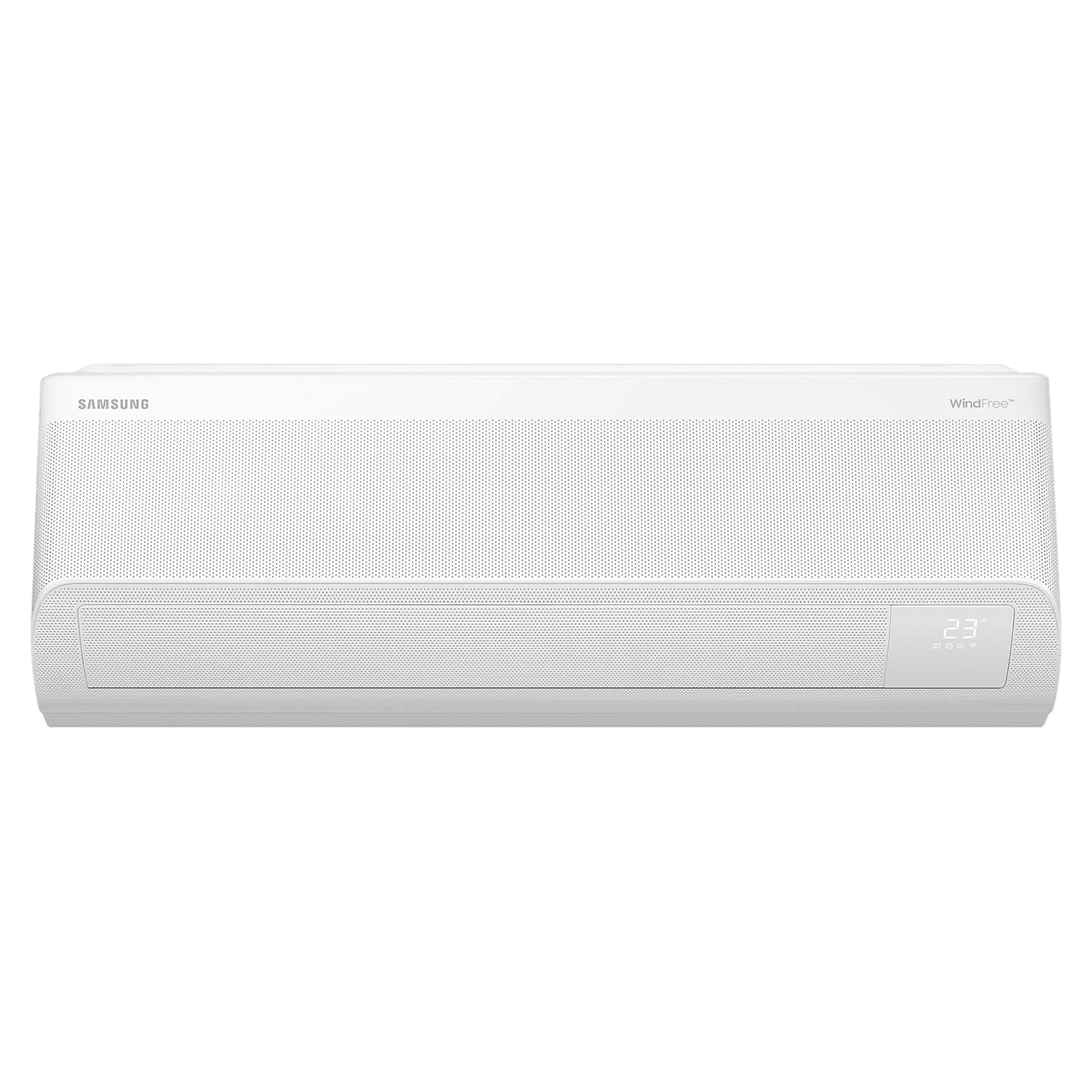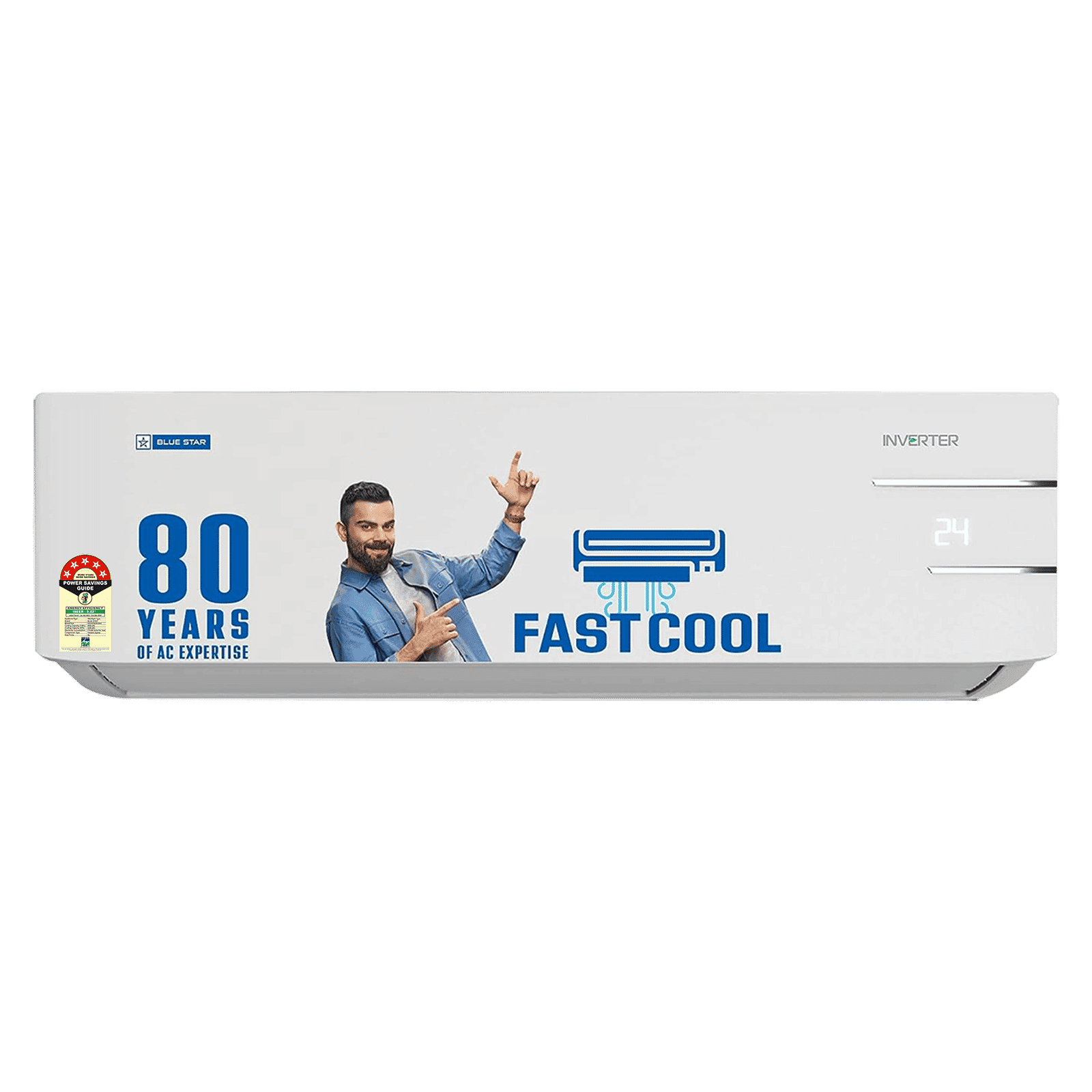
Home Appliances
•04 min read

Buy SAMSUNG Windfree 5 in 1 Convertible 1.5 Ton 3 Star Inverter Split Smart AC with Voice Assistance (2025 Model, Copper Condenser, AR60F19D1XWNNA) online at best prices from Croma. Check product details, reviews & more. Shop now!
Nothing is more frustrating than an air conditioner not cooling during a sweltering summer day. When your AC is not blowing cool air, a range of issues could be the culprit. In this comprehensive checklist, we will delve into the most common causes and step-by-step solutions to help you troubleshoot your AC and restore comfort to your home. By following this guide, you'll gain valuable insights into quick fixes for AC troubleshooting, ensuring your home cooling issues are resolved swiftly.
Begin by ensuring your thermostat is set correctly to 'cool' mode. It might seem obvious, but often the temperature is inadvertently set too high or left in fan mode, which can lead to your air conditioner not cooling effectively. Make sure the temperature is set lower than the current room temperature. Additionally, verify that the thermostat is functioning properly by checking that it has fresh batteries and is receiving a stable power connection.
A clogged air filter is a frequent cause of AC unit problems. Dirt and debris accumulate over time, restricting the airflow and compromising the cooling performance. Take a few minutes to remove and examine the filter. If it appears dirty or blockages are evident, replace it promptly. Remember, a clean air filter not only enhances cooling efficiency but also contributes to better indoor air quality.
Another simple yet crucial step is to check if your AC is receiving power. Inspect the circuit breakers and fuses to ensure nothing has tripped or blown. Electrical issues, even minor ones such as loose connections or occasional short circuits, can lead to your air conditioner not cooling properly. Addressing these may resolve the problem without further complications.
Dirty condenser coils are a common yet overlooked culprit. When the coils are covered in dust and debris, the AC efficiency drops because heat is not effectively dissipated into the environment. You can clean these coils using a garden hose or, for a more precise approach, a specialized coil cleaner. This small task can have a significant impact on your AC's performance.
Low refrigerant levels are another typical reason for an air conditioner not cooling. Refrigerant is essential for absorbing and releasing heat, and any leak or depletion can hinder the cooling process dramatically. This is an area where a DIY approach is not recommended – it’s best to contact a professional to inspect, check, and safely refill the refrigerant if needed.

Buy Blue Star YNUS 5 in 1 Convertible 1.5 Ton 5 Star Inverter Split Smart AC with Dust Filter (2023 Model, Copper Condenser, IC518YNUS) online at best prices from Croma. Check product details, reviews & more. Shop now!
Frozen or dirty evaporator coils can severely impede the cooling process. When the coils freeze, it indicates issues with airflow or refrigerant, and defrosting them temporarily might bring back cooling. Nonetheless, cleaning the coils and ensuring proper airflow is imperative to prevent recurring ice formation. Addressing this not only fixes the immediate issue but also preserves the longevity of your unit.
The outdoor component of your AC system must have ample space for air circulation. Over time, leaves, debris, or even misplaced objects can obstruct airflow, significantly affecting performance. Ensure that the area surrounding your outdoor unit is free from obstructions. This simple clearing can greatly enhance the overall efficiency of your air conditioner.
Blocked or leaky ducts can cause uneven distribution of cool air, contributing to home cooling issues. Inspect your ductwork for any visible damage or obstructions. Seal leaks and remove blockages to ensure that every corner of your home receives the cooling air it needs. Properly maintained ducts are vital for an optimal cooling experience, ensuring that energy is not wasted and cool air is delivered efficiently.
The blower fan is essential for circulating the cooled air throughout your home. Dust and debris can accumulate on the fan blades, causing them to malfunction or slow down. Check to see if the fan is operational and give the blades a gentle cleaning. An efficiently running blower fan is key to maintaining even temperatures in your home.
Pro Tip from Tata Neu
Regular maintenance and timely checks can significantly extend the lifespan of your air conditioning unit. Trust Tata Neu and Croma's ZipCare services to keep your AC running efficiently all year round.
A faulty capacitor might be the hidden reason your AC is not blowing cool air. The capacitor provides the initial surge required to power components like the blower fan and compressor. If the capacitor is failing, your unit might struggle to start or maintain cooling performance. Use a multimeter to test it, and if it proves faulty, replace it as soon as possible to avoid further complications.
The compressor is the heart of your air conditioning system. If you notice unusual noises or suspect that it isn’t operating correctly, it could be a significant indication of a problem. Listen for any irregular sounds and monitor the compressor’s performance closely. Since the compressor is complex and critical for cooling, consulting a professional technician is advisable if any anomalies are detected.
Regular maintenance is the golden rule for preventing many common AC unit problems. Engaging with expert HVAC maintenance services not only ensures that your unit is in top shape but also helps in identifying potential issues before they develop into more significant faults. Scheduling routine maintenance can safeguard your unit’s performance during the hot summer months.
Check the thermostat settings and circuit breakers to ensure the unit is receiving power. Reset the circuit breaker if required.
For optimal performance, replace your air filter every 1-3 months, depending on usage and environmental conditions.
Yes, you can clean the coils using a garden hose or specialized coil cleaner. If uncertain, consult a professional to avoid any accidental damage.
Low refrigerant levels indicate a leak or depletion. It is best to contact a professional for detection and safe recharging of the refrigerant.
In summary, by following this checklist, you can systematically identify and address the common reasons causing your air conditioner not to blow cool air. From verifying thermostat settings and ensuring clean filters to addressing electrical faults and engaging professional maintenance, these measures will help restore optimal performance to your AC. Ensuring that every component – from condenser coils to ductwork – is in good condition will not only resolve immediate issues but also reduce the likelihood of future home cooling issues. With the added benefits of quick fixes and scheduled maintenance, you can enjoy a cool and comfortable living space all summer long.
Regular care of your AC unit is an investment in long-term efficiency and comfort. Reflecting on the ease and convenience associated with smart home management can truly enhance everyday living. The checklist provided is a handy starting point whenever you face issues with your AC not blowing cool air. Explore a range of features like express delivery and expert after-sales support, ensuring that maintenance and timely interventions remain hassle-free. Remember, the little steps you take today can lead to a significantly more comfortable tomorrow.